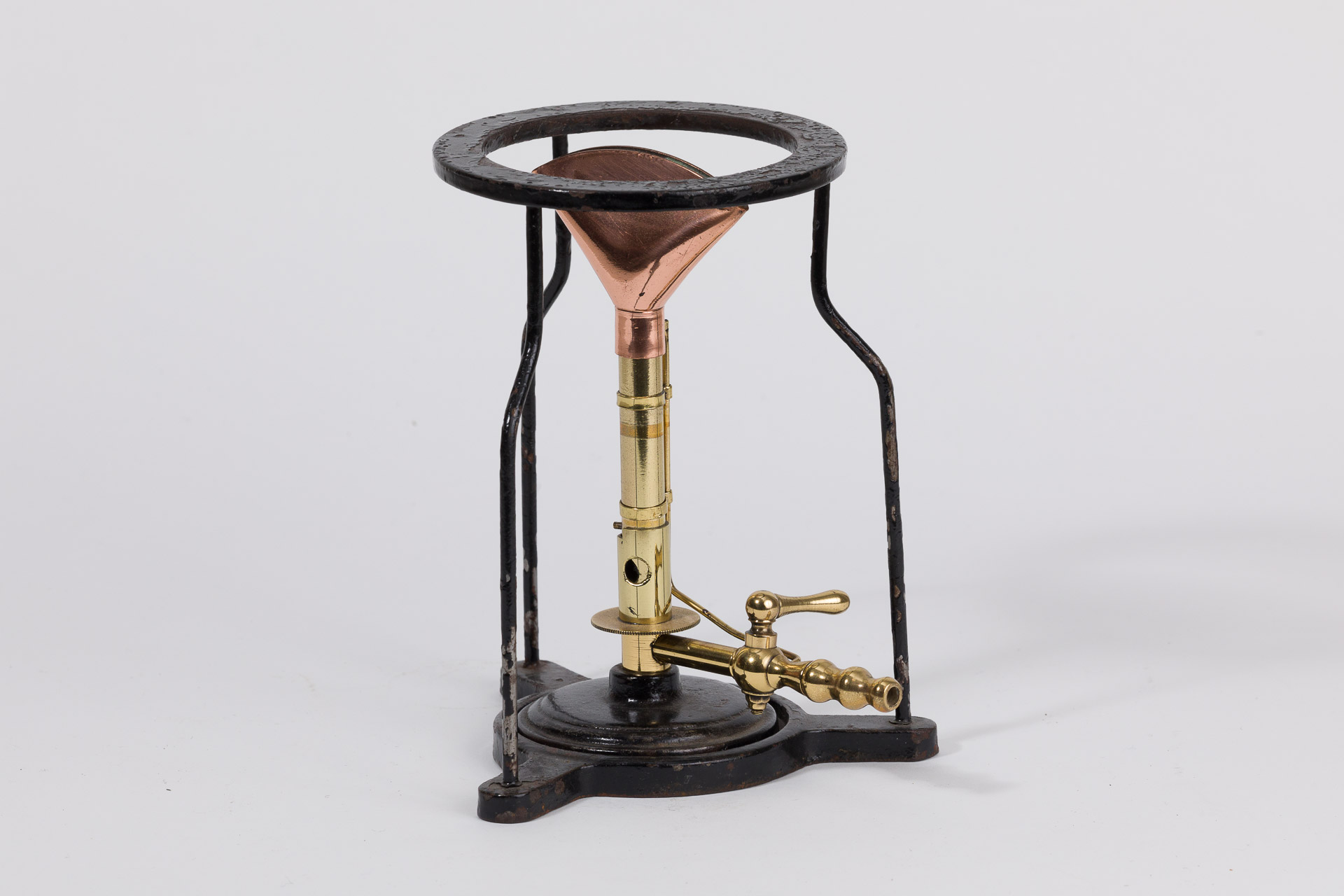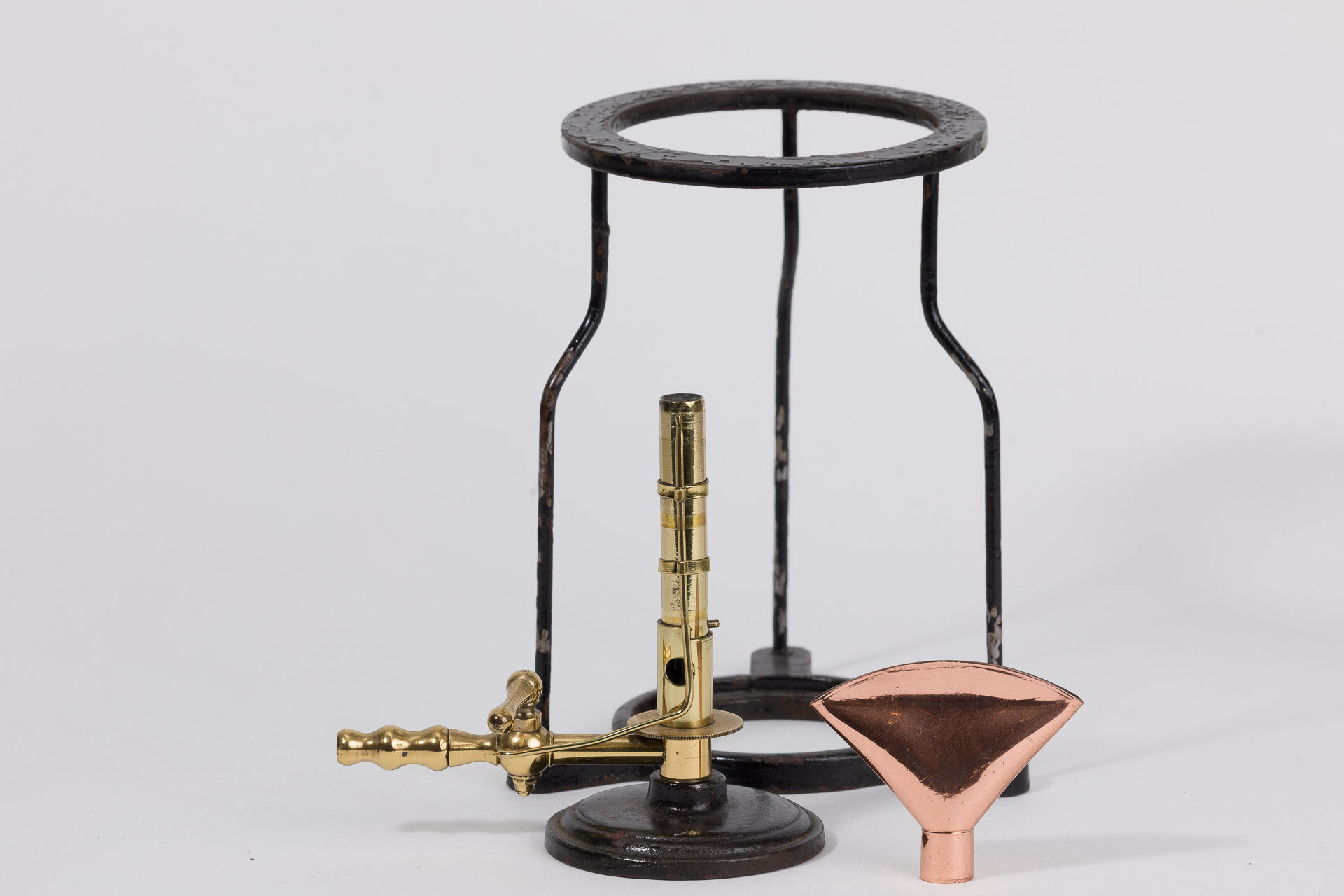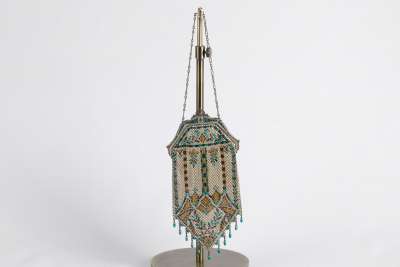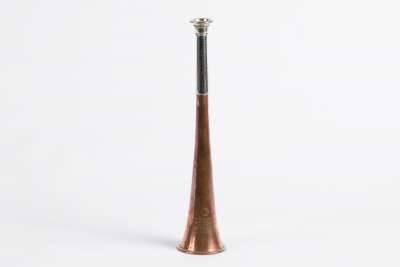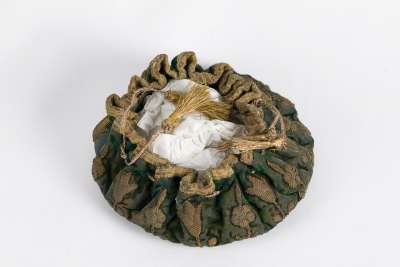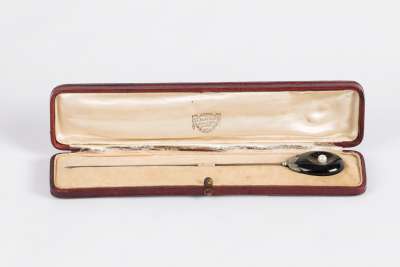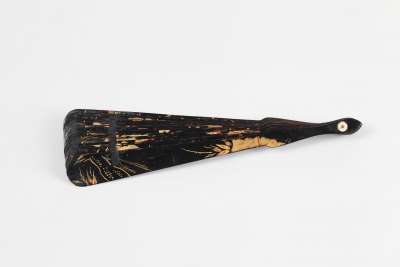This self-igniting Bunsen burner, dating from approximately 1890 to 1920, is a notable piece for its engineering and practicality. Originating from a period where scientific experimentation and laboratory efficiency were gaining momentum, this burner features an inlet gas pipe with a stopcock at the base and a self-lighting jet. The ability to maintain a smaller, continuous pilot flame that can ignite a larger flame with the turn of a handle represents a thoughtful design aimed at conserving gas while enhancing operational speed. This piece retains its original three-inch flame spreading attachment, allowing for a broader flame output when required. Additionally, the burner fits securely into its original upstand, ensuring stability during use. This antique is an intriguing example of early 20th-century scientific apparatus, likely of European manufacture.
Condition Report
This self-igniting Bunsen burner is in good condition, consistent with its age and historical use. The metal surfaces exhibit a patina that is typical of items exposed to laboratory environments over decades. The stopcock and self-lighting mechanism remain functional, although the precision of these components may have diminished slightly over time. The flame spreading attachment is intact and fits securely to the burner. Minor surface scratches and small areas of discoloration are present, reflecting the burner’s extensive history of use. These characteristics contribute to the authenticity and historical value of the piece, making it a valuable addition to a collection focused on scientific instruments.
Dimensions
Weight: 770gm, Length: 17cm, Width: 14cm, Height: 27cm.
An Essential Laboratory Instrument
The original use of this Bunsen burner was as a laboratory tool for heating, sterilisation, and combustion. Its design with a self-lighting mechanism would have offered considerable convenience in environments where efficiency and ease of use were paramount. Laboratories of the late 19th and early 20th centuries would have benefitted from its ability to maintain a pilot flame, thus reducing the time necessary to ignite the burner when needed for experiments or demonstrations. The inclusion of a flame spreading attachment further suggests it was used for applications requiring a consistent and broad heat source.
Ingenious Design of the Early 20th Century
This Bunsen burner showcases the ingenuity of early 20th-century scientific equipment. The period was marked by a push towards more efficient and user-friendly devices in laboratories, reflecting broader trends in industrial design. The integration of a self-lighting feature speaks to innovations aimed at improving safety and convenience, reducing the need for external ignition sources. The inclusion of a stopcock for precise control over gas flow, coupled with the pilot flame design, highlights the emphasis on resource conservation and operational efficiency, which were becoming increasingly important during this era.
Materials and Craftsmanship of the Bunsen Burner
Constructed from durable metals, this Bunsen burner exemplifies the materials and craftsmanship typical of the period. The metalwork, likely composed of brass or a similar alloy, provides both durability and the ability to withstand high temperatures, essential for laboratory settings. The components are carefully machined, indicating a high level of precision in manufacturing. The self-lighting feature and the stopcock mechanism would have required meticulous assembly, reflecting the skilled craftsmanship prevalent in the production of scientific instruments at the time. The overall design is both functional and robust, demonstrating the careful consideration given to the needs of laboratory users.
Attribution to Anonymous Craftspersons
While the specific maker of this Bunsen burner remains unidentified, it likely originates from a workshop known for producing scientific instruments during the late 19th to early 20th centuries. Many such items were crafted by skilled artisans who excelled in metalwork and mechanical design, contributing to the advancement of laboratory equipment. This piece may have been produced by a European manufacturer, common during this period, where workshops often operated without leaving identifiable marks on their products. The absence of a maker’s mark does not diminish its historical significance, as it represents the collective expertise and innovation of its era.
Collected by Enthusiasts of Scientific History
Collectors of scientific instruments often seek items like this Bunsen burner for their historical and educational value. Pieces from the late 19th and early 20th centuries provide insight into the evolution of scientific practice and technology. This burner is particularly appealing due to its unique self-lighting feature, which illustrates a significant innovation in laboratory equipment design. Collectors appreciate such items for their ability to tell the story of scientific development and their role in education and research. Acquiring this burner offers a tangible connection to the past, making it a fascinating addition to any collection focused on the history of science and technology.
